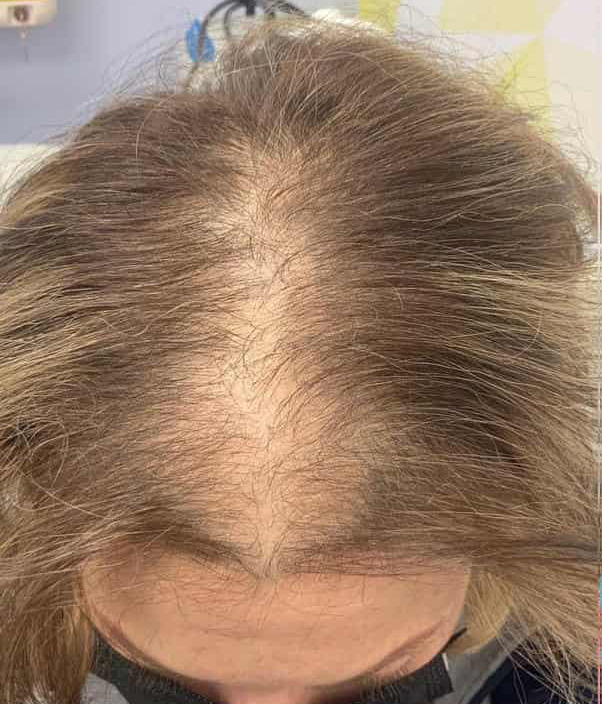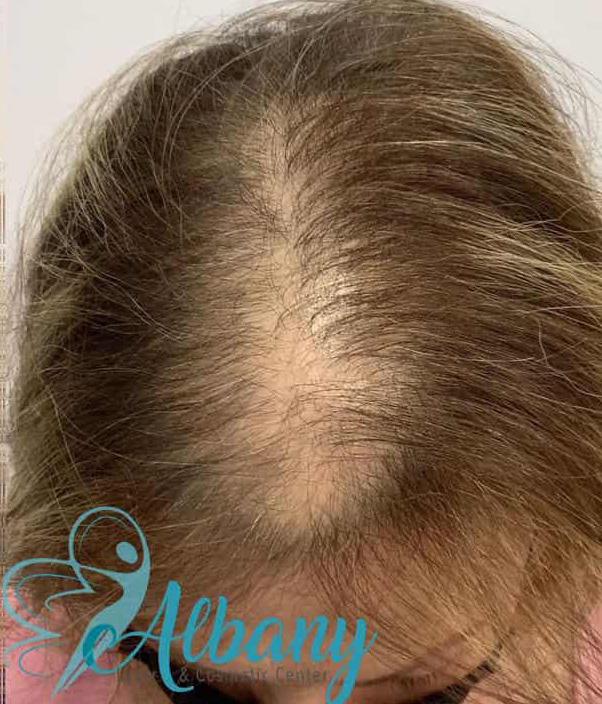Hair Restoration Results
This post will not discuss traditional pharmaceutical treatments for hair loss, such as Rogaine and Propecia.
However, we will focus on other untraditional treatments, such as meso and laser therapy for hair loss.
Mesotherapy for hair loss
This includes small S.C. injections or microneedling of medication and material that enhances hair growth, preserves existing hair, and promotes new hair. Platelet-Rich Plasma (PRP) and B complex injections are widely used. The medication can be delivered through dermal injections in the scalp or microneedling with an Eclipse derma pen.
Laser Hair restoration treatment
Using the Er-Yag laser on the Smooth mode would help promote circulation to the scalp and hair follicles via heat transmission.
How often do I need to get these treatments?
We recommend a minimum of four sessions (two of each) to see satisfactory results. These sessions are 2-4 weeks apart.
Cost of hair loss treatment
The four sessions are priced at $1200, and some patients must repeat these sessions 2-3 times a year.
Here is another case for hair restoration
We employ platelet-rich plasma (PRP) to expedite healing in numerous body parts. It may aid in the restoration of hair growth.
Typically, doctors use this medication to address hair loss caused by androgenetic alopecia, a common disorder in which hair follicles shrink.
Although platelet-rich plasma is a relatively new technique, there is some scientific evidence that it can enhance hair growth.
We detail how doctors use PRP to treat hair loss and what studies have to say about its effectiveness in this article.
What is platelet-rich plasma?
PRP may be recommended by a physician to treat androgenetic alopecia.
To comprehend how PRP works, it is necessary to grasp the role of platelets in healing.
Platelets are components of blood. When a person receives a cut or wound, platelets are among the body’s “first responders” that rush to the scene to halt the bleeding and encourage healing.
The researchers hypothesized that extracting concentrated platelets and injecting them into injured body parts may speed up the healing process.
To create PRP, a medical expert will centrifuge a blood sample. This machine rotates rapidly, separating the blood’s components. Following that, the medical expert removes platelets for injection.
PRP has a high level of growth factors and proteins that promote tissue restoration. Because some forms of hair loss are caused by damage to hair follicles, researchers first theorized that PRP might aid hair regeneration by reversing the process in androgenetic alopecia.
Since then, PRP has grown in popularity as a means of regenerating hair. Doctors have also employed PRP to heal tendons, muscles, and ligament injuries, such as those sustained during athletic activities.


